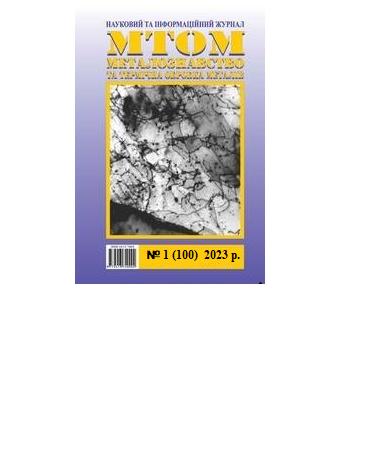THE INFLUENCE OF WELDING TYPE ON THE STRENGTH CHARACTERISTICS OF CONNECTIONS OF REINFORCING BARS WITH A METAL PLATE
DOI:
https://doi.org/10.30838/J.PMHTM.2413.280323.32.942Keywords:
anchoring, reinforcing bars, metal plate, welding, welded jointsAbstract
Introduction. In reinforced concrete structures, the ends of reinforcing bars are anchored in the concrete by launching the reinforcement beyond the considered section for the length of the force transfer zone from the reinforcement to the concrete as well as by using anchoring devices. If the required design length of the reinforcement cannot be ensured, special measures to anchor the reinforcement bars are applied [1, p. 5.36]. One of these measures is to install special anchoring devices in the form of plates at the ends of the longitudinal bars. When anchoring devices in the form of plates, special attention is paid to the welding type of the plate with the bar, which should prevent the bar from being pulled out when longitudinal forces from external load are applied. Materials and methodology. The material to be investigated was reinforcing bars of class A500C with diameters of 25 and 32 mm, connected at the ends to metal plates by means of contact welding. Holes with a diameter equal to the diameter of the reinforcement were drilled in the metal plates. The bars were inserted into the holes flush with the surface of the plates and welded to the plates by one and double sided welding. A total of two bars were used per welded joint. The strength of welded connection of reinforcing bars with plates was determined on the tensile testing machine HMS-100 by applying maximum tensile force to reinforcing bars. The fracture pattern of each reinforcing bar to plate joint was noted. The results of the experiment. As a result of the experiment, it was found that the destruction of the connection between the two reinforcing bars of 25 mm and 32 mm diameter and the metal plate during one-sided welding occurred by destroying the welding connection and pulling the bars out of the plate. When the bars were joined on both sides, there was no pulling out of the plate. In this case, one 25-mm-diameter bar joint is out of service due to bar breakage in the area of contact with the weld and the other is due to the exhaustion of its physical yield strength. The destruction of the 32mm diameter bars and metal plate joint in the two-sided welding process was due to the rupture of one bar in the area of its contact with the weld and the cracking of the other bar's contact with the weld. Conclusions. As a result of the experiment, it was found that the strength values of the welded connection between reinforcing bars 25 mm and 32 mm in diameter and a metal plate at bilateral welding were 1,33−1,36 times higher than those at one-sided welding.
Downloads
Published
Issue
Section
License
Authors that are published in this journal agree to follow the conditions:
Authors reserve the right to the authorship of his work and cede the right to the journal of first publication of this work on conditions of the license under the Creative Commons Attribution License, which allows others to distribute it freely with the obligatory reference to the author of the original work and the first publication of the work in this journal.

